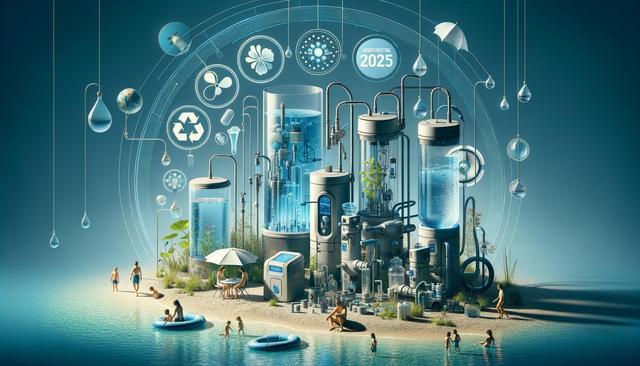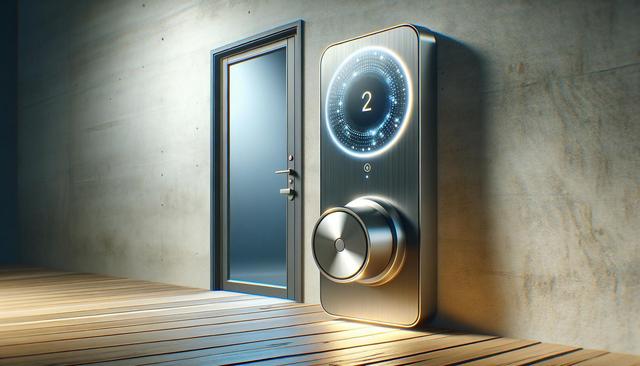Smart Technology Integration in Water Purification
The year 2025 has marked significant strides in the incorporation of smart technology into water purifiers and filters. These advancements are not just about filtering water more efficiently, but also about offering users greater control and insight into their water usage and quality. Many modern systems now come equipped with IoT capabilities, enabling real-time monitoring through mobile apps. Users can receive alerts about filter changes, track water consumption, and even analyze the quality of water being processed.
Smart purification systems are also integrating AI to optimize performance. These systems learn from usage patterns and environmental data to adjust filtration processes dynamically. This not only ensures consistently clean water but also extends the life of the filter components. Some notable features in smart water purifiers include:
- Remote diagnostics and maintenance alerts
- Voice assistant integration for hands-free operation
- Customizable filtration based on location and water source
These smart features are particularly helpful in urban environments where water sources vary and demand for reliability is high.
Emphasis on Sustainability and Eco-Friendly Materials
Sustainability has become a cornerstone of product development across industries, and water purification is no exception. In 2025, manufacturers are increasingly focusing on reducing the environmental impact of their products. This includes using biodegradable or recyclable materials in filters and casings, as well as designing systems that require less frequent replacement of parts.
Some brands have introduced refillable filter cartridges, reducing plastic waste associated with disposable filters. Others are experimenting with materials like coconut shell carbon and ceramic composites that are both effective and sustainable. Key sustainability trends include:
- Energy-efficient UV and RO technologies
- Water-saving mechanisms that reduce wastage during filtration
- Longer-lasting filters that reduce replacement frequency
These choices resonate with consumers who are increasingly environmentally conscious and looking to reduce their ecological footprint even in their household appliances.
Shift Toward Multi-Stage and Hybrid Filtration Systems
As water contamination becomes more complex, single-method filtration is often insufficient. In 2025, multi-stage and hybrid water purifiers have become more common, combining several filtration techniques to address a broader range of impurities. These systems often integrate reverse osmosis (RO), ultraviolet (UV), and ultrafiltration (UF) in a single unit, offering a more comprehensive purification process.
This approach allows for the removal of a variety of contaminants, including:
- Heavy metals like lead, mercury, and arsenic
- Biological contaminants such as bacteria and viruses
- Chemical pollutants including pesticides and chlorine
- Suspended solids and microplastics
Hybrid systems also provide flexibility for users in areas with fluctuating water quality. By adjusting the filtration method based on real-time water analysis, these units offer a tailored solution for safe drinking water.
Accessibility and Affordability for Broader Adoption
One of the significant developments in water purification in 2025 is the increased focus on making clean water accessible to a wider population. Advances in manufacturing and materials have led to more affordable solutions without compromising quality. Compact and cost-effective models are now available for rural and low-income households, helping to bridge the gap in global water accessibility.
These units are designed to be:
- Easy to install and maintain without professional assistance
- Operable without electricity in off-grid areas
- Durable under varying environmental conditions
NGOs and government programs in several countries have also played a role by subsidizing water purifiers for communities in need. This collaborative effort has significantly expanded the reach of clean water technologies.
Consumer Trends and Health Awareness
Consumers in 2025 are more informed and proactive about their health than ever before. This shift is driving demand for purification systems that not only clean water but also enhance its health benefits. Some newer models include mineralization features that add essential minerals like magnesium and calcium back into the water after filtration.
Health-conscious consumers are also interested in systems that can remove emerging contaminants such as pharmaceutical residues and endocrine-disrupting chemicals. To meet these demands, manufacturers are investing more in research and transparent product testing. Many products now come with certifications and independent lab reports to assure consumers of their efficacy.
Key consumer expectations shaping the market include:
- Visible indicators of water quality and filter status
- Customization options based on dietary or medical needs
- Integration with wellness apps for hydration tracking
This focus on health and personalization is transforming how people view water purifiers—not just as appliances, but as integral components of a healthy lifestyle.
Conclusion: Navigating the Changing Landscape of Water Filtration
The water purification landscape in 2025 reflects a dynamic blend of technology, sustainability, and accessibility. Consumers now have access to a wide array of options tailored to diverse needs, from smart home integration to eco-conscious materials and affordable solutions for underserved communities. As awareness of water quality and its impact on health grows, the role of reliable filtration systems becomes increasingly vital. Whether you’re upgrading an existing setup or investing in your first purifier, understanding these trends can help you make a more informed and future-ready choice.


